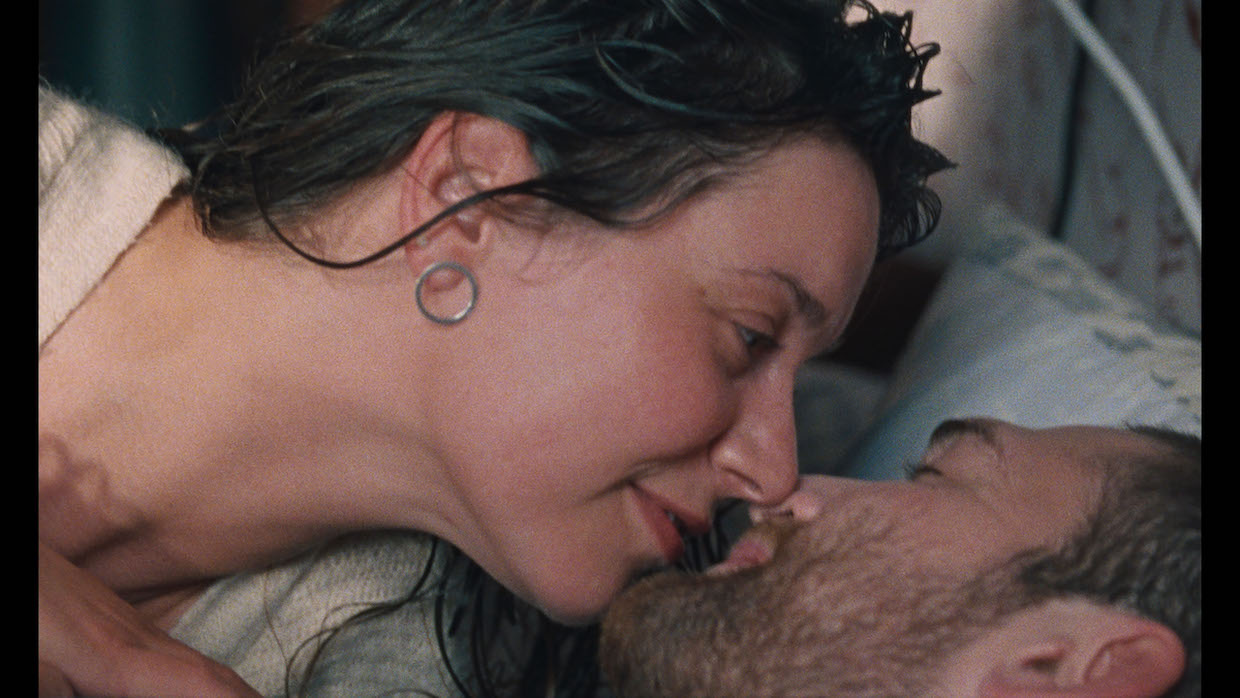 Back to selection
Back to selection
“Nobody Shot a Feature Film on 16mm in Lithuania for a Long Time”: DP Laurynas Bareiša on Slow
 Slow, courtesy of Sundance Institute.
Slow, courtesy of Sundance Institute. Writer-director Marija Kavtaradze’s sophomore feature Slow follows the complicated romance between a contemporary dancer named Elena (Greta Grinevičiūtė) and an asexual sign language interpreter named Dovydas (Kęstutis Cicėnas). Though the pair share an intense chemistry, their individual sexual needs and desires (or lack thereof) are a source of constant compromise and adjustment, leading to inevitable strain.
Cinematographer Laurynas Bareiša talks about working on the project, which is distinct for being the first Lithuanian film shot on 16mm in approximately a decade.
See all responses to our annual Sundance cinematographer interviews here.
Filmmaker: How and why did you wind up being the cinematographer of your film? What were the factors and attributes that led to your being hired for this job?
Bareiša: We started working with Marija in our second year of film school. We did three shorts and two features since then and we haven’t fallen out yet. So I guess she still finds my work decent and I’m really grateful for that, because I keep learning a lot from her.
Filmmaker: What were your artistic goals on this film, and how did you realize them? How did you want your cinematography to enhance the film’s storytelling and treatment of its characters?
Bareiša: We discussed skin texture a lot with Marija and production designer Sigita Šimkūnaitė. Elena’s dance movements and Dovydas’ hand gestures were a big part of the film and we wanted the skin to feel real for the viewer. We did tests with 16mm and digital and decided that the natural aesthetic of film stock gave us the feeling we wanted. Using film also helped me feel more confident about the final picture and keep lightning and camera interventions to a minimum. This helped free up the film set and have more space for Marija and the actors to work in. It was especially useful for intimate scenes.
Filmmaker: Were there any specific influences on your cinematography, whether they be other films, or visual art, or photography, or something else?
Bareiša: Nan Goldin was a big influence for this film. We referenced her use of frontal light, overexposed sunlight on the skin and face and also how she frames the naked body.
Filmmaker: What were the biggest challenges posed by production to those goals?
Bareiša: Nobody shot a feature film on 16mm in Lithuania for a long time (As far as I can tell, for 10 years). Some of the crew have worked before on short projects shot on film, but there was no experience working with 16mm on a feature length project, so there was a lot of anxiety about the workflow and the end result. We made some mistakes in organizing the work on set, but in the end we managed to figure it out.
Filmmaker: What camera did you shoot on? Why did you choose the camera that you did? What lenses did you use?
Bareiša: We shot on Aaton XTR S16. The film was shot entirely handheld and Aaton is really comfortable to use in this configuration. The lenses were ARRI ZEISS ULTRA 16 and these were pretty much the only ones available for 16mm at that time here.
Filmmaker: Describe your approach to lighting.
Bareiša: Where possible we tried to use natural frontal light to emphasize the skin and its natural texture. Also with gaffer Simonas Glinskis we tried to add some lighting imperfections, to give the film a look of spontaneity, to not make the light feel perfect for every angle. Especially for the intimate interior scenes. Because we figured it would make the scenes feel more private, as if there was no lighting crew working on lighting the bed where two people have an intimate moment.
Filmmaker: What was the most difficult scene to realize and why? And how did you do it?
Bareiša: The dance performance scene was a challenge. Because we worked with a stage light designer Andrius Stasiulis, who made the light setup for the performance as he would do in a real performance. It looked great in reality but would have been underexposed on film. So we gradually brought the stage lights up to register on film and this destroyed the look in real life. I had to put on a brave face that day and do a lot of calming down to convince everyone that it will look good in the end.
Filmmaker: Finally, describe the finishing of the film. How much of your look was “baked in” versus realized in the DI?
Bareiša: We tried to do most of it on set, Simonas checked the spectrometer all the time, so we get the color we wanted on set. In the end we did have to make some adjustments in post, because we had some day for night scenes, which did not come out the way I wanted.
